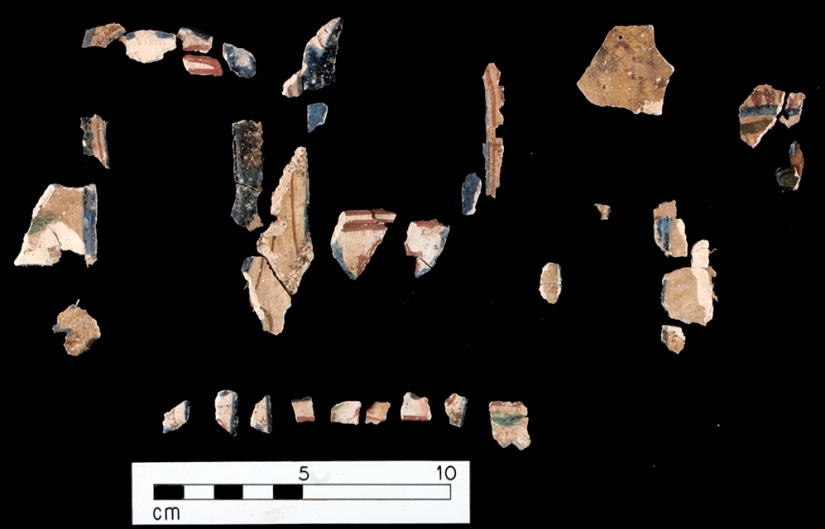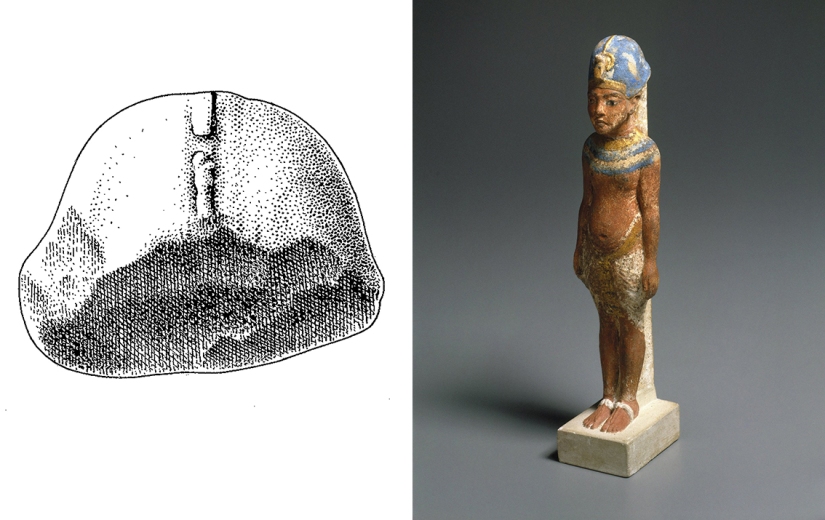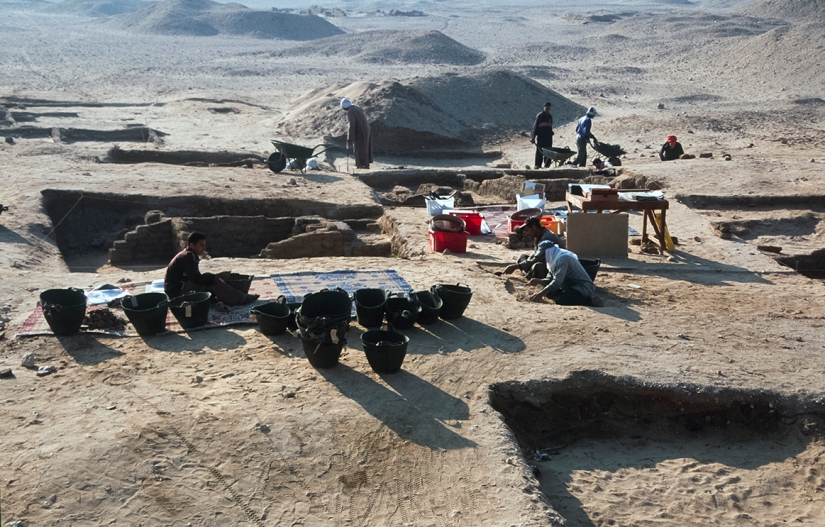http://weekly.ahram.org.eg/News/23134.aspx
Celebrating its 115th birthday
The Egyptian Museum, one of downtown Cairo's most distinctive landmarks, is celebrating its 115th anniversary, writes Nevine El-Aref
More than 100 years ago the khedive Abbas Helmi II, watched by princes and high-ranking government officials, cut the ribbon at the museum's opening. This was Egypt's treasure house and a shrine to its past. Throughout that age and since emperors, empresses, kings and queens, presidents, scholars and thousands upon thousands of tourists have visited the Egyptian Museum and gazed in awe on the marvellous works of art which fill every niche and corner.
As the country pays homage to all who shared in its construction, the Ministry of Antiquities in collaboration with civil society organisations and the parliament's Tourism Committee held a grand celebration this week. The highlight is a special exhibition in the museum's foyer displaying a collection of 86 artefacts that have never been put on show before.
Sabah Abdel-Razek, director-general of the museum, said that the exhibition is divided into three sections. The first is a documentary exhibition showing the museum's original blueprints designed by French architect Marcel Durvein as well as photographs featuring Abbas Helmi II, Egypt's khedive at the time, placing the building's foundation stone in the presence of princes and high-ranking officials.
Photographs showing the different stages of the building's construction, the pen used by Abbas Helmi II to write a few words in the museum's guest book, and a memorial stamp and coin from that time rounds off this part of the exhibition.
The tools and instruments that were used in laying the museum's foundation stone in 1897 and those used in signing the khedival decree to construct the museum are also on show. They include the pickaxe, trowel, hammer and a wooden porringer embellished with silver decorative elements that were used for the opening, as well as the feather pen and inkwell used by the khedive.
A collection of maps, celebratory medallions and black-and-white photographs of the foundation and construction of the museum are also among the objects on display. Two copper desk clocks decorated with foliage ornaments and angels that once decorated the desk of French archaeologist Gaston Maspero, the first director of the museum, are also on show.
The second section of the exhibition shows a newly discovered Roman mummy with a painted funerary mask of the deceased. The mummy was uncovered in the Al-Banat Monastery in Fayoum during excavation work carried out by an Egyptian-Russian team. The mummy is in a good conservation condition, and the mask is decorated with scenes depicting the sky deity Kheibir, while the mummy's chest bears the face of the ancient Egyptian goddess Isis. The legs have an image of a white sabot painted on them.
The third section of the exhibition displays a collection of newly recovered artefacts from the United Arab Emirates. Earlier this month, ruler of Sharjah Sheikh Sultan bin Mohamed Al-Qasimi returned to Egypt a collection of almost 400 artefacts that were stolen and illegally smuggled into Sharjah.
Abdel-Razak told Al-Ahram Weekly that not all the objects were on display in the exhibition. They include five limestone stelae dedicated to ancient Egyptian deities, as well as a collection of sandstone, limestone and granite human statues from the Old, Middle and New Kingdoms and the Late Period. Ushabti figurines, amulets carved in faience, and bronze statuettes of deities are also on show. A part of a sphinx-shaped statue from the Late Period is also among the collection.
During the event, Minister of Antiquities Khaled El-Enany launched the ministry's "My Museum in your Classroom" initiative that aims at providing a virtual tour of the museum to school pupils while they are in their classrooms.
Statues recovered from Sharjah and Fayoum mummy
TO THE 21ST CENTURY: "The Egyptian Museum in Tahrir Square was the first building in the early 20th century to be built as a museum and not a palace converted into a museum as was more common during that time," El-Enany told the Weekly.
He described the museum as "one of the greatest in the world, and its anniversary is a clear indication that it is a living museum, moving from 1902 to 2017 and into the future." He said that a development plan for the museum had been launched to define the future role of the museum within the local and international museum landscape, giving it the prominence it has long deserved.
"The museum is not only one of Egypt's landmarks, but one of the country's most distinguished monuments as well," El-Enany said. He said the museum would not be closed after the completion of the Grand Egyptian Museum (GEM) on the Giza Plateau, as some have claimed, but would be developed and some of its artefacts put on special display. Others would be taken out of storerooms to be shown for the first time.
Elham Salah, head of the Museums Sector at the ministry, told the Weekly that the Egyptian Museum housed a collection of 170,000 artefacts, only 40,000 of which are on display. "After the transportation of artefacts to the GEM and the National Museum of Egyptian Civilisation (NMEC) in Fustat, the museum in Tahir Square has the opportunity to excavate its store galleries and uncover distinguished objects to put on display," Salah said.
She explained that the displays of the museum would be changed to suit the new collection. A new lighting system would be installed and a complete renovation would be carried out to give the museum back its original appearance. The walls will be repainted in their original colours and the ornaments renewed.
The first phase of the revival project of the museum started in 2014 and was implemented in four halls in the east wing of the Tutankhamun Gallery and on the second floor. New facilities were provided, modifying the layout and aspect of the museum gardens from the original plans. Physical changes were also made to the museum building, and work now focuses on the building's first floor.
Salah explained that among the collections that would be put on better display in the museum were those of the Tanis jewellery treasure of the 20th and 21st dynasties and the funerary collection of Tutankhamun's great-grandparents Yuya and Tuya.
Some artefacts from the basement would be put on show, she said, among the most important being the sarcophagi of the Bab Al-Goses cachette discovered in 1891. This includes a collection of 150 sarcophagi with mummies of 21st-Dynasty priests with some of their funerary collections.
The new displays would not only depend on putting artefacts in spacious areas within the building, since information boards would also be installed including details of where objects were found and the restoration work carried out. The order of the artefacts exhibited on the first floor would be changed to follow a chronological order from prehistoric times through to the Graeco-Roman period. The second floor will be dedicated to special subjects such as pottery, daily life objects and astrology.
Egyptian Museum in 1902
HISTORY OF THE MUSEUM: Before the establishment of the Egyptian Museum in Tahrir Square there were no museums in Egypt to house the country's treasured antiquities collections. Most archaeology in Egypt was under French control, and Egyptians had little or no influence over what became of ancient artefacts, which were freely exported all over the world.
Decorated sarcophagi were favourite gifts in England and France, and some Egyptians contributed to the country's loss of its historical records by digging for hidden treasures and selling what they found to foreign collectors.
In an effort to stop the plundering of the antiquities, in 1835 the khedive Mohamed Ali established the first Antiquities Service of Egypt, the "Service des Antiquités". He created a programme to exhibit and conserve ancient artefacts and asked Youssef Diya Effendi to propose a site for an Egyptian museum in the Azbakeya district of Cairo.
Mohamed Ali asked the then minister of education to make a full report, documenting the country's archaeological sites and making sure that artefacts were sent to store rooms in Azbakeya. His death stalled progress on the programme.
In 1848, the khedive Abbas I moved the artefacts to a hall in the Citadel. The Austrian duke Maximillian visited the collection and was so impressed by it that the khedive Said gave part of it to him as a gesture of good will. In 1855, he also ordered the police to be more vigilant in monitoring Egyptian antiquities being sold or exported abroad and appointed Auguste Mariette to direct the newly establish Egyptian Antiquities Service.
Mariette's job was to preserve and protect Egypt's cultural heritage, and he was given a modest house in Boulaq, originally the premises of the River Navigation Company, as this was once one of Cairo's ports. This house later became the nucleus of the first museum of Egyptian antiquities in the country.
Mariette stored the antiquities discovered during his own excavations in his house. It was not until 1863 that the khedive Ismail approved the construction of a museum of Egyptian antiquities in the city centre. But the project was postponed due to financial constraints, and Mariette was merely granted more space in front of his house in Boulaq to expand his "museum".
The Boulaq Museum officially opened to the public in 1878, but a high Nile flood caused much damage in the area and many artefacts were destroyed. The museum was closed for renovation and repair until 1881, after which it was reopened. Mariette then passed away and was succeeded by Gaston Maspero, who was granted the jobs of director of the Boulaq Museum and head of the Department of Antiquities.
The treasured collection in the Boulaq Museum had increased in size, and in 1890 it was transferred to the Ismail Pasha Palace in Giza, now the Giza Zoo. Later, upon his appointment as director of the museum and the Department of Antiquities, the scholar Jacques de Morgan reorganised the collections in the new institution, then known as the Giza Museum.
Several accidents at the Boulaq and Giza museums resulted in much damage and the loss of invaluable artefacts, meaning that the construction of a new Egyptian Museum had become imperative. An announcement for a competition for the best architectural design was made, and in 1895 the prize went to the French architect Marcel Dourgnon. The cornerstone of the new Egyptian Museum was laid on 1 April 1897. On 15 November 1902, the Egyptian Museum was officially opened.
Based on European architectural models, the museum is typical of large public and institutional buildings — libraries, theatres and city halls — built at the end of the 19th century and the beginning of the 20th century all over Europe and North America. Such buildings were mostly isolated, monumental, and designed in a classical style known as Beaux Arts, which was popular during this period.
The Egyptian Museum was the first museum in Egypt to be designed with massive internal space to house large numbers of monuments. The development of the Egyptian Museum and its surroundings, according to the original plans, continued until the 1952 Revolution, when political instability, heavy bureaucracy, and a lack of systematic planning threatened the museum's position as the world's largest establishment dedicated to ancient Egyptian artefacts.
A memorial medallion for the inauguration of the museum
LATER CHALLENGES: One of the challenges it has faced is the breakdown of the natural ventilation system and the high fluctuations of humidity due to the absence of a system for air control. Because of this, windows are often left open, especially in the summer, to get fresh air inside the museum, but this has caused damage to many artefacts.
Missing window panes in the skylights on the roof also contributed to the deterioration of objects, in addition to the ease by which thieves could break into the museum, as shown during the 25 January Revolution.
In other instances, inadequate protective measures have been used. For example, following Egypt's defeat in the 1976 Six-Day War with Israel, the government decided to build concrete covers on top of the skylights to protect the museum from potential air raids. This was done without taking into account the increased load on the roof.
Another constant problem is construction being carried out in the vicinity of the museum, which has affected its structure. Vibrations caused by tunnel-boring during the construction of metro lines and from traffic passing nearby in Tahrir Square and over the 6 October Bridge have caused cracks in the museum's walls, as well as in some of the artefacts.
The Egyptian Museum was managed by foreign directors until 1950, when Mahmoud Hamza became the first Egyptian director of the institution. By 1949, British military barracks to the southeast of the museum had been removed, creating a larger public space within the grounds.
Five years later, in 1954 the Cairo Governorate took a large section of land west and south of the museum to construct the headquarters of the Arab League, a hotel and a building for the Cairo Municipality where in the early 1960s Egypt's then president Gamal Abdel-Nasser established the headquarters of the Arab Socialist Union.
This was converted to the National Democratic Party in 1978 by Nasser's successor, president Anwar Al-Sadat.
In the late 1970s, a number of transport, infrastructure and tourism development projects were established on the northern side of the Museum. The 6 October Bridge and a five-star hotel in Abdel-Moneim Riad Square were constructed without taking into consideration the development of the museum and its general layout.
The old All Saints' Cathedral was demolished to make way for these works. The garden on the eastern side of the museum was reduced to broaden the adjacent thoroughfare. To the south, the gardens were removed and replaced by a bus station, which itself was demolished in the 1980s during the construction of the Tahrir metro station.
-- Sent from my Linux system.

![Min. of Antiquities to start excavation work at Bir Youssef Bir Youssef [Photo Courtesy: Ministry of Antiquities official Facebook page]](https://www.egypttoday.com/siteimages/Larg/33384.jpg)













